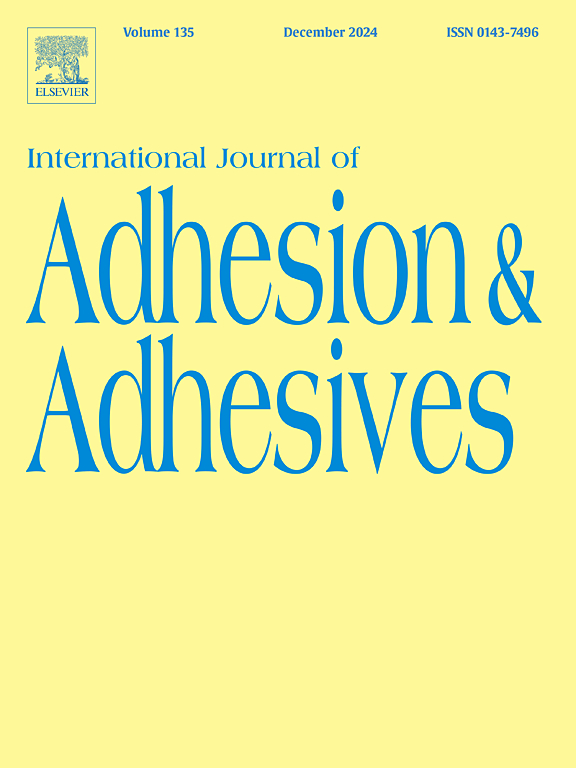Universal adhesion promoters for enhanced adhesion on metal and polymeric substrates
IF 3.2
3区 材料科学
Q2 ENGINEERING, CHEMICAL
International Journal of Adhesion and Adhesives
Pub Date : 2025-03-13
DOI:10.1016/j.ijadhadh.2025.104013
引用次数: 0
Abstract
Universal adhesion promoters, capable of performing on different substrates of varying surface energies have been synthesised from 1,4 butane diol diglycidyl ether and monofunctional amines (MFA) like dopamine (DA) and 2-phenylethyl amine. The adhesion promotion efficiency of these primers was investigated in combination with an epoxy-amine based adhesive system. MFA incorporated primer formulations, EADD and EADP showed superior adhesion over both metallic (steel, Cu and Al substrates) as well as polymeric substrates (HDPE and PTFE). A universal priming concept was derived based on the synthesised monofunctional amine (MFA) incorporated epoxy primers. MFA based primers facilitated 1.2–1.5 fold enhancement in adhesive strength on HDPE and PTFE and 2–2.7 fold higher strength for Al, Cu and Steel compared to their uncoated couterparts. Epoxy amine primers without MFA exhibited lower adhesive strength on metallic and polymeric substrates, proving their efficacy. Mechanism of higher adhesion promoting efficiency of catechol and noncatechol based MFA primers were investigated using experimental and computational studies. Noncatechol amine based primer, EADP showed significantly higher strength on metallic and nonmetallic substrates compared to catechol based MFA. This study offers a fast, neutral and scalable coating strategy, suitable for industrial applications.
求助全文
约1分钟内获得全文
求助全文
来源期刊

International Journal of Adhesion and Adhesives
工程技术-材料科学:综合
CiteScore
6.90
自引率
8.80%
发文量
200
审稿时长
8.3 months
期刊介绍:
The International Journal of Adhesion and Adhesives draws together the many aspects of the science and technology of adhesive materials, from fundamental research and development work to industrial applications. Subject areas covered include: interfacial interactions, surface chemistry, methods of testing, accumulation of test data on physical and mechanical properties, environmental effects, new adhesive materials, sealants, design of bonded joints, and manufacturing technology.
 求助内容:
求助内容: 应助结果提醒方式:
应助结果提醒方式:


